We paid a visit to Dominik Eulberg in the Westerwald and spoke about his latest album, the science book of the year, optics, and raising awareness of nature in today’s world.
Mannigfaltig (“manifold”) – this isn’t only the name of one of his albums, this trait also applies to Dominik Eulberg himself. He covers a wide range of activities, be it as a producer and DJ, as a writer, as a nature game developer, as a nature documentary audio producer for Jan Haft, or as a guest scientist at the Museum of Natural History in Berlin. But all these “manifold” roles have one thing in common – nature is the link between them all.
In his techno beats, the artist reproduces the sounds of nature. He calls these “Synthibirds,” which means nothing more than birdsong mixed with electronic sounds.
As bird ambassador of the year 2023 for NABU, he also dedicated a track to the whinchat (“Braunkehlchen” in German), which is also included on his current album Avichrom:
The neologism “avichrome” simply means “bird colors,” referring to the exuberant variety of colors in the bird world. Each of the tracks on the album is named after a native bird species that has a color in its German species name.
My family and I visited Dominik at his home in the Westerwald and we chatted about various projects. His wife Natalia was also there.

The fact that birds and insects play a critical role here is immediately apparent when you set foot in the Eulberg home. I’m particularly struck by the European Robin, which artist Matthias Garff recreated for the collaborative project Tönende Tiere (Animals Making Sounds) from discarded everyday objects such as an empty coconut, a work glove, soldering tongs, marbles, and an old shoe rack, for example.
I’ll learn more about this project in a moment. But before that, Natalia introduces me to the freshly hatched Strawberry Tree Butterflies, the largest European butterfly, which had pupated on the local strawberry tree in the Eulbergs’ living room and recently hatched only a few days ago. When Natalia talks about caterpillars, butterflies, and their breeding, her enthusiasm is almost contagious. She has always had a love of butterflies, and this manifested itself through her contact with Dominik, who she says is a kind of “walking encyclopedia” and also studied butterflies a great deal in his childhood.
“Moths existed long before butterflies. From the perspective of evolutionary biology, butterflies evolved from moths. Here in our region, you can find about 3,700 species of Lepidoptera. A little more than 180 of them belong exclusively to the butterfly family. They are best distinguished from moths by their button-shaped thicker feeler ends, which look exactly like how children draw butterfly feelers: a line with a pom-pom at the end. Right now I’m breeding different species that fascinate me. We let them fly around our house. We want them to mate, and then we’ll give their eggs away to other people who want to breed them someday. Raising such large exciting butterflies is an unforgettable experience, especially for children, and one they should have done at least once, in my opinion. A chance to get a better idea of the miracle of life and maybe also an initial experience that gets them more active in nature conservation later on,” Natalia says enthusiastically.


Meanwhile, Dominik sits in front of his microscope and shows us the details of a kingfisher feather. Even my little son is completely fascinated – hit the mark, I would say! After all, raising people’s awareness of nature is Dominik Eulberg’s mission in life.
When he’s touring, he regularly offers nature tours – so people can first experience the sounds of nature live, and then dance to their beats. He now also hosts biodiversity shows, a multimedia melange in which he performs as half musician and half science communicator. By doing so, he opens up entirely new reasons for sensitizing people to the messages of nature conservation.

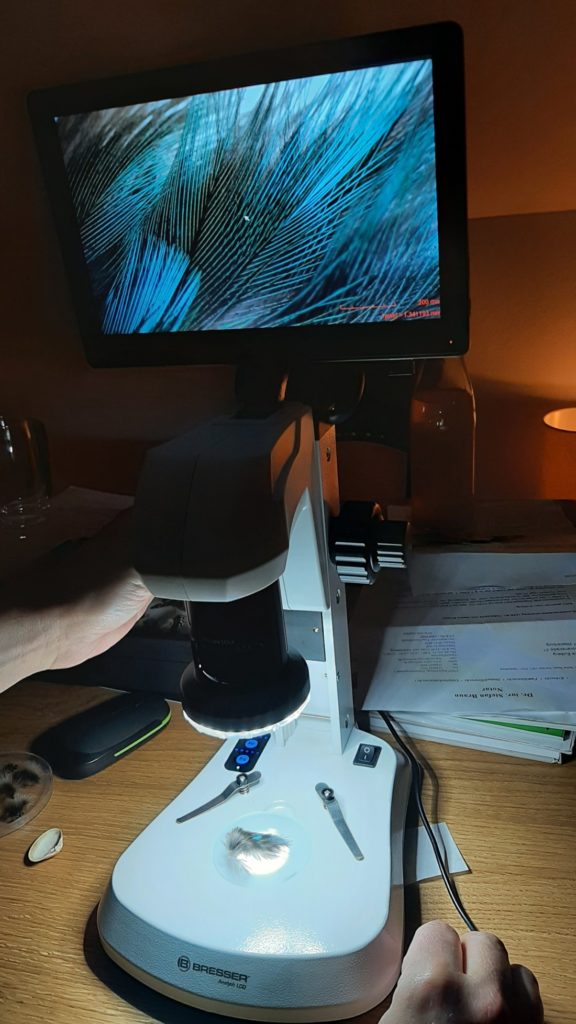
“You’ve said before in a previous interview that the natural world right on your doorstep is your home and inspires you. Personally, I think the Westerwald Lake District is an insider tip for birders in Germany. What are some of the unique species that can be found in the Westerwald Lake District?” I ask him.
Dominik: “You can find all four native grebe species here: the Great Crested Grebe, Little Grebe, as well as Red-necked and Black-necked Grebes, which in fact all breed here in the lake district. This is, of course, a real ornithological highlight here in western Germany. However, they haven’t been able to successfully raise many young birds in recent years. Research is still being done to determine the cause. Neozoa, such as the raccoon, are one of the reasons under suspicion, which have now been proven to have migrated here.”
Dominik regularly monitors birds around the Westerwald Lake District together with local associations. His optical equipment from ZEISS is his constant companion when doing so. And of course it accompanies us on a little tour around the Dreifelder Weiher lake.
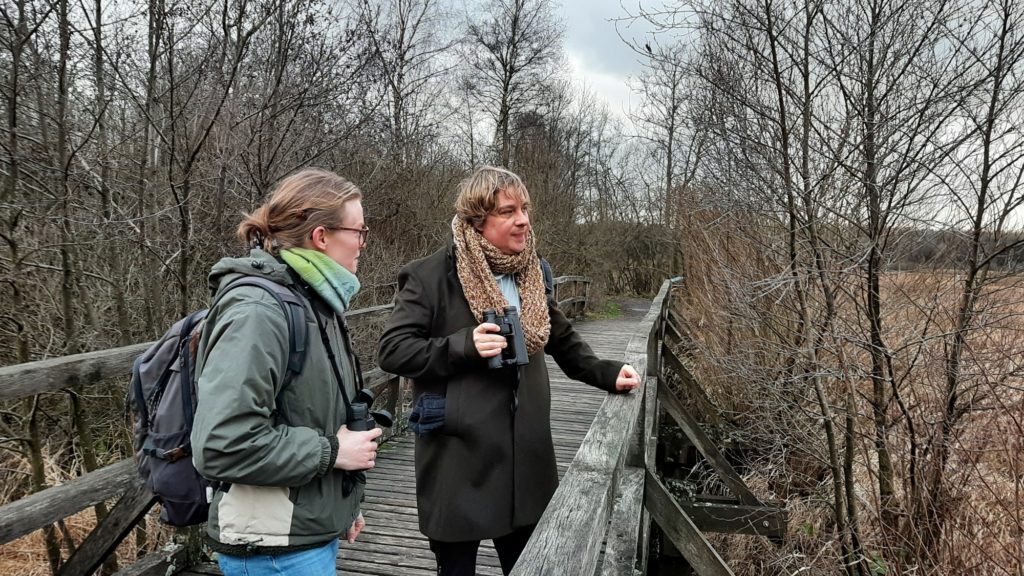

I ask him what he likes about ZEISS:
“To me, ZEISS is a company steeped in tradition that has been around for a very long time. I associate a great deal with ZEISS: all the observatories, Carl Zeiss Jena, the location in Wetzlar, if only because of its geographical proximity. I like the variety of products, whether it’s microscopes, binoculars, or spotting scopes. I think it’s great that ZEISS is highly innovative and is always researching, so it doesn’t remain stagnant.
I’ve been working with you for quite a while now and I like the personal, direct, and authentic way we interact and the constructive collaboration. The binoculars feel great in your hands and are very light, plus I really like the shifted center of gravity on the SF 42.”
Dominik also regularly uses our ZEISS DTI 3 thermal imaging device. As a bat ambassador, he uses it for his bat excursions or to detect owls in quarries. He uses it to track bird migrations at night, because most songbirds migrate at night. “With the help of the DTI, I can check to see whether nesting boxes are occupied, which helps me determine where birds are roosting at night,” Eulberg says.
This is because dozens of species breed in summer in his extensive and extremely diverse garden in the Westerwald, which features huge Benjes hedges, biotopes and a swallow hotel. It also helps him detect grassland birds such as larks and lapwings for the DDA. And this photograph of a Corncrake was a real highlight in this context and caused a sensation in expert circles nationwide, as it could not be clearly located without a thermal imaging device.
And what do you think of our new compact binoculars, the SFL 30?
“I think you guys have really struck a niche with this product. It’s so small and light that you’ll want to take it with you without agonizing over the weight, but it still has excellent image quality, making it just fantastic for traveling.”
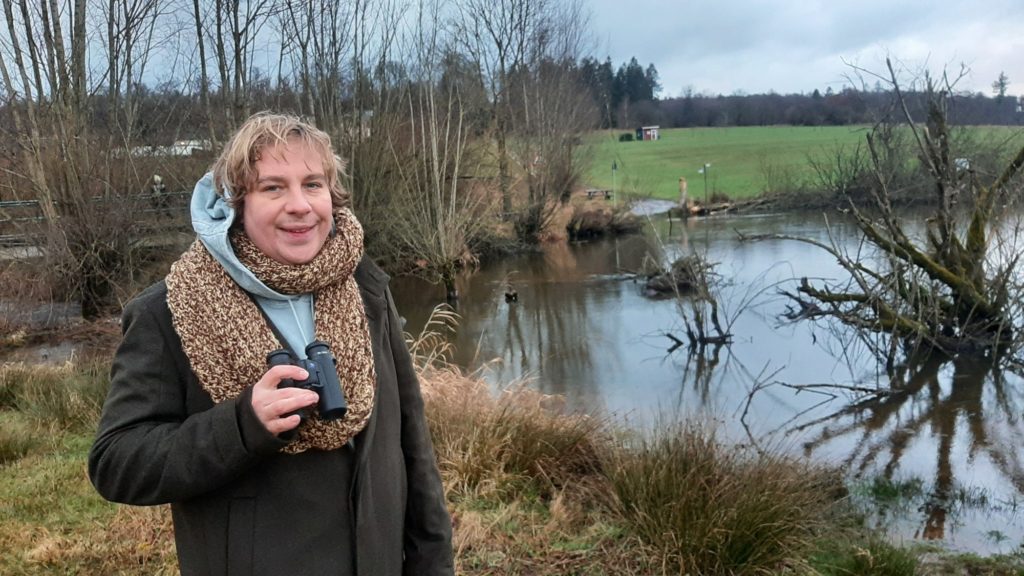
We also talk, of course, about his book Microorgasms Everywhere, which was awarded the title of “Science Book of the Year.” Personally, I think it’s written with such levity that it’s a real joy to read. And it is packed with so much knowledge about the interesting details and treasures that nature has to offer.
Of course, there’s educational work behind this as well. “We only protect what we value,” says Dominik.
He sees himself as an “interpreter” when it comes to communicating findings from the world of science.

“When writing this book, it was important to me to show that true miracles exist on our doorstep and that you don’t have to travel to any exotic places on earth to see them. In this context, I’m thinking especially of the Tiger Beetle, which I found very fascinating as a child, because it covers a hundred and twenty times its body length in one second, and sees with its antennae, since it can’t process anything with its eyes while running. To put this into a human context, it means we would have to run as fast as an airplane.
© BENNY TRAPP (stock.adobe.com)
I find insects particularly interesting, because in most cases people are usually disgusted. In my eyes, this is always more of an expression of a “crazy” way of looking at things in the truest sense of the word. Because if you correct this perspective and really look at them closely, you will see that they are really beautiful creatures. In the case of the Tiger Beetle, I have always found the large mandibles interesting, which it can use to divide its prey in half in one bite, removing all doubt as to its intentions.
To me, the Common Swift is a true marvel from the bird world, which spends its entire life in the air; it drinks in the air, it eats in the air, and it mates in the air and even sleeps in flight. Except for breeding, it does not come into contact with solid ground at all. Yet swifts can live for 20 years, during which time they can travel up to four million kilometers, which is ten times the distance from the earth to the moon. I find that fascinating and that was very important to me, to make people understand that we should approach nature more on an equal footing again and gain more respect for our fellow animal world through this sense of wonder.”
© AGAMI Photo Agency (stock.adobe.com)
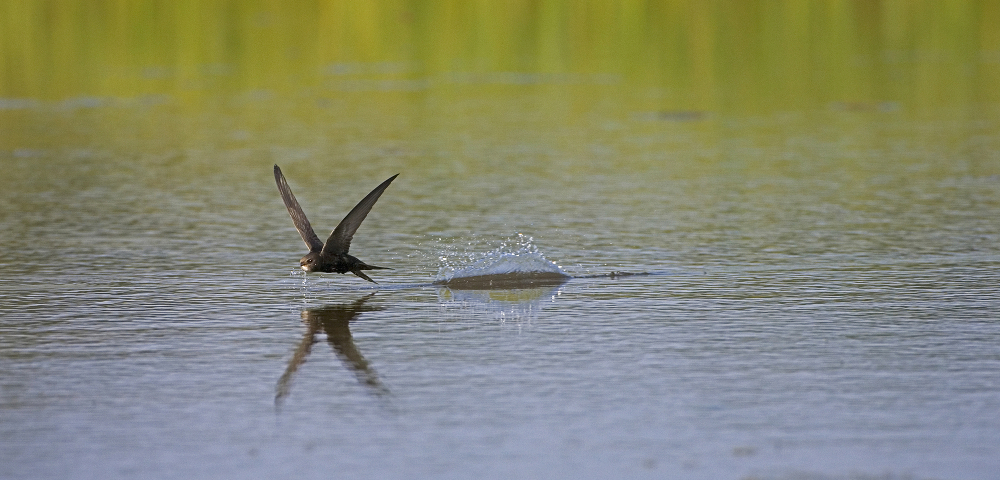
What are his latest projects in this direction?
Dominik: “My new book Tönende Tiere (Animals Making Sounds) will be published by Eichborn Verlag on April 28. It features 50 of the most exciting voices of different animal species that you can hear in this area, such birds, amphibians, mammals, insects, and there’s even a species of butterfly that, if you’re lucky, you can see here which makes the wildest sounds. The book includes “amazing facts” that I have written for each animal, facts that inspire wonder and offer new insights, something that will resonate with the readers, and all of them are illustrated using the specially created animal sculptures by artist Matthias Garff and tagged with a QR code to listen to the animal voices, which, when transformed into musical notes, begin to play musical instruments like synthesizers.”
In this context, he views the animals as the musicians who compose the piece and sees himself only as an interpreter who gives the animals an instrument in order to give them more of a voice.
For Dominik, as a musician and science communicator in one, this is, of course, a very exciting subject, but he also sees this as one of today’s biggest dilemmas:
“Hearing is one of the first sensory organs to be formed in the womb and is the sensory organ with the highest resolution that we have, but which we also often neglect in this day and age. We torture our sense of hearing with cheap headphones and low quality MP3s and simply don’t truly listen anymore, not only to ourselves and our environment, but also to nature. There are studies that show that not even 3% of people can recognize the chaffinch, the most common breeding bird species next to the blackbird, by its song. And how do we want to protect something that is, on the one hand, our survival insurance, but which we don’t even know. And this is extremely important to me, to promote awareness of this issue through my work as an artist and scientist,” he affirms.
And what makes me particularly happy as a mother is that he is currently working with Kosmos Verlag on a product series for children, the first of which is an educational book on insects planned for 2024.
“Nature is simply the greatest artist of all and an inexhaustible source of inspiration for my own artistic creations. Just look at their exuberant variety of shapes and colors – like flying gemstones,” Eulberg enthuses, proudly presenting his beetle collection to me.
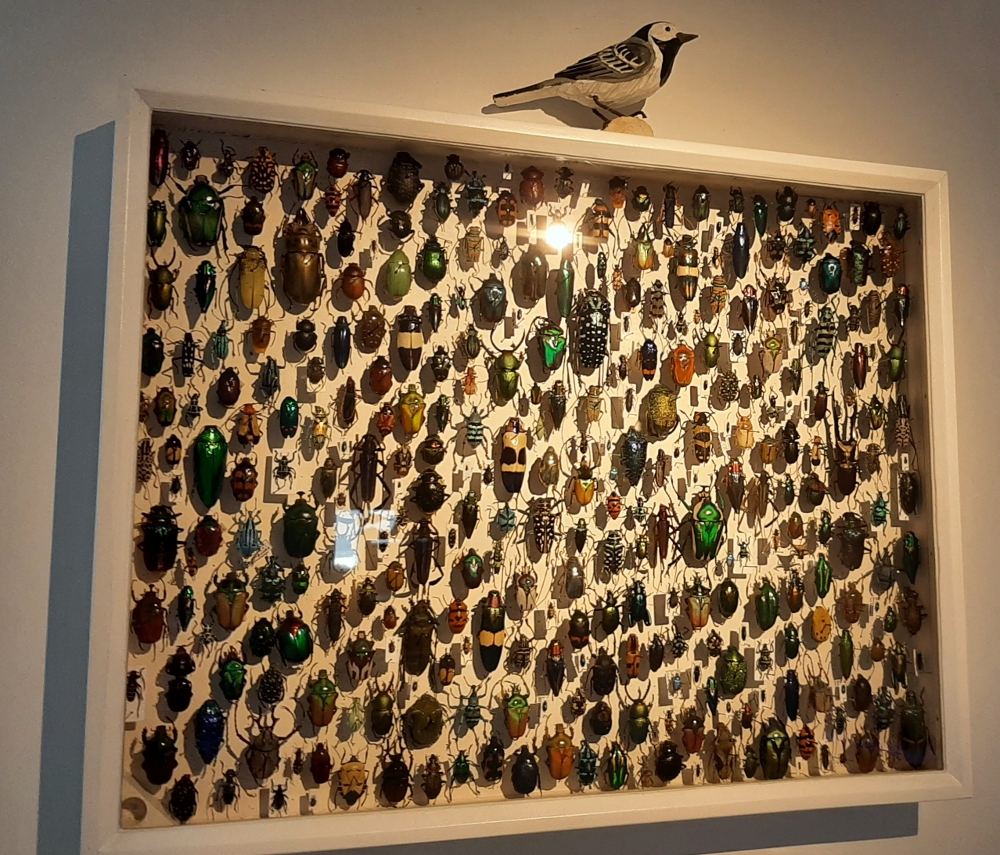
They not only complement each other when it comes to their hobby of raising butterfly caterpillars – Natalia has contributed to all of these projects since 2018 and they work hand in hand here. Natalia has a degree in communication design. And Natalia and Dominik complement each other not only in their personal lives, but also professionally. For their current project, Natalia is doing the graphics, image design, and layout.
“We each work on our own projects, but we sort of bring the two streams of energy together where there are intersections. In the case of the Animals Making Sounds project, we make a great team overall, even beyond Dominik and me. We’re all equals and everyone looks at what they’re good at and contributes, and it’s a lot of fun,” she says.
Finally, I ask Dominik what advice he would give to people just starting out in birding and facing their first challenges when it comes to identifying different species:
Dominik: “I think winter is a good time to start observing nature because all the migratory bird species aren’t around, the trees aren’t full of leaves, and you can get a quick overview of the twenty to thirty most common species visiting the bird feeder to learn about the nuances, such as the different plumages between males and females in some species”.
To broaden your horizons, it is important to have a good pair of binoculars. I can only advise everyone here to get a good pair, because for one thing you don’t keep buying new ones and it also just makes a big difference when trying to identify species. When I pull out my Victory SF 42 from ZEISS, for example, it’s a treat for me every time. To me, enjoying this experience is essential to observation, and for that you need good basic equipment. This is extremely important, which is why I would urge everyone to invest in high-quality optical devices, as this will give you peace of mind for a long time.
The next step would then be to memorize bird songs. The most common 18 breeding bird species of the 259 indigenous breeding bird species account for eighty percent of the local bird population. And once you have that in place, the puzzle starts to come together more and more and it’s like a keyboard that evolves – you learn to play and you keep discovering new things.”
We end the interview on that note. It’s dark outside by now and Dominik is about to head to his studio to work. We return home that evening extremely inspired – my son falls asleep on the way home, proudly displaying his temporary Whinchat tattoo from NABU, which Dominik applied to his arm, and I have the synthibirds of “Avichrom” in my ear.